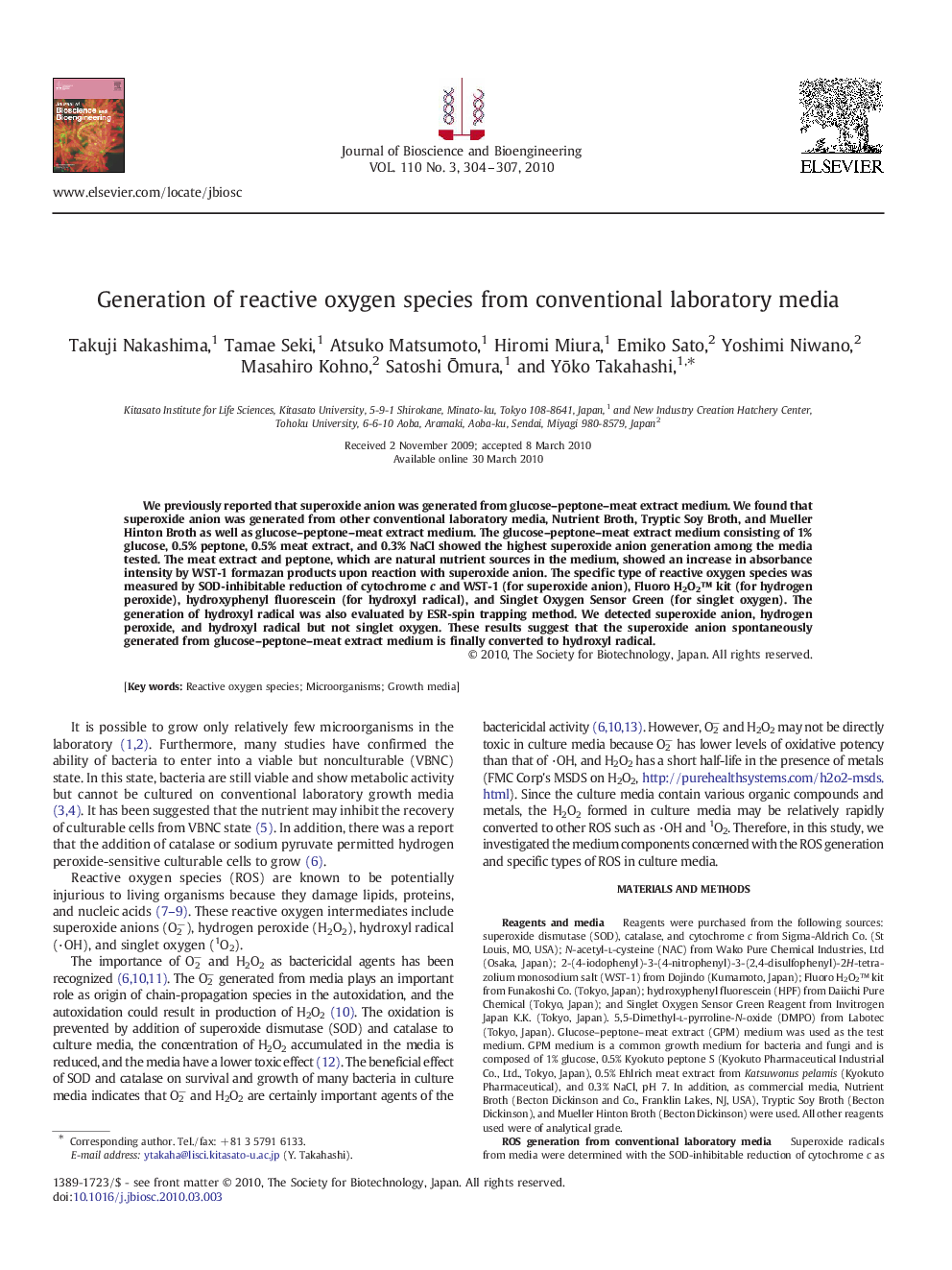| Article ID | Journal | Published Year | Pages | File Type |
|---|---|---|---|---|
| 21095 | Journal of Bioscience and Bioengineering | 2010 | 4 Pages |
We previously reported that superoxide anion was generated from glucose–peptone–meat extract medium. We found that superoxide anion was generated from other conventional laboratory media, Nutrient Broth, Tryptic Soy Broth, and Mueller Hinton Broth as well as glucose–peptone–meat extract medium. The glucose–peptone–meat extract medium consisting of 1% glucose, 0.5% peptone, 0.5% meat extract, and 0.3% NaCl showed the highest superoxide anion generation among the media tested. The meat extract and peptone, which are natural nutrient sources in the medium, showed an increase in absorbance intensity by WST-1 formazan products upon reaction with superoxide anion. The specific type of reactive oxygen species was measured by SOD-inhibitable reduction of cytochrome c and WST-1 (for superoxide anion), Fluoro H2O2™ kit (for hydrogen peroxide), hydroxyphenyl fluorescein (for hydroxyl radical), and Singlet Oxygen Sensor Green (for singlet oxygen). The generation of hydroxyl radical was also evaluated by ESR-spin trapping method. We detected superoxide anion, hydrogen peroxide, and hydroxyl radical but not singlet oxygen. These results suggest that the superoxide anion spontaneously generated from glucose–peptone–meat extract medium is finally converted to hydroxyl radical.
